
A star is an astronomical object consisting of a luminous spheroid of plasma held together by its own gravity. The nearest star to Earth is the Sun. Many other stars are visible to the naked eye from Earth during the night, appearing as twinkling dots due to their immense distance from the Earth.
A star remains stable because of the energy generated by nuclear reactions in the interior which balances the inward-directed gravitational force.
Let us find out how the lifecycle of a star looks like and what it experiences throughout.
STAGE 1: A Giant Gas Cloud
A star begins life as a giant cloud of gas which is generally an accumulation of dust, gas and plasma.
Stars form inside relatively dense concentrations of interstellar gas and dust known as molecular clouds. At these temperatures, gases become molecular meaning that atoms bind together. CO and H2 are the most common molecules in interstellar gas clouds.
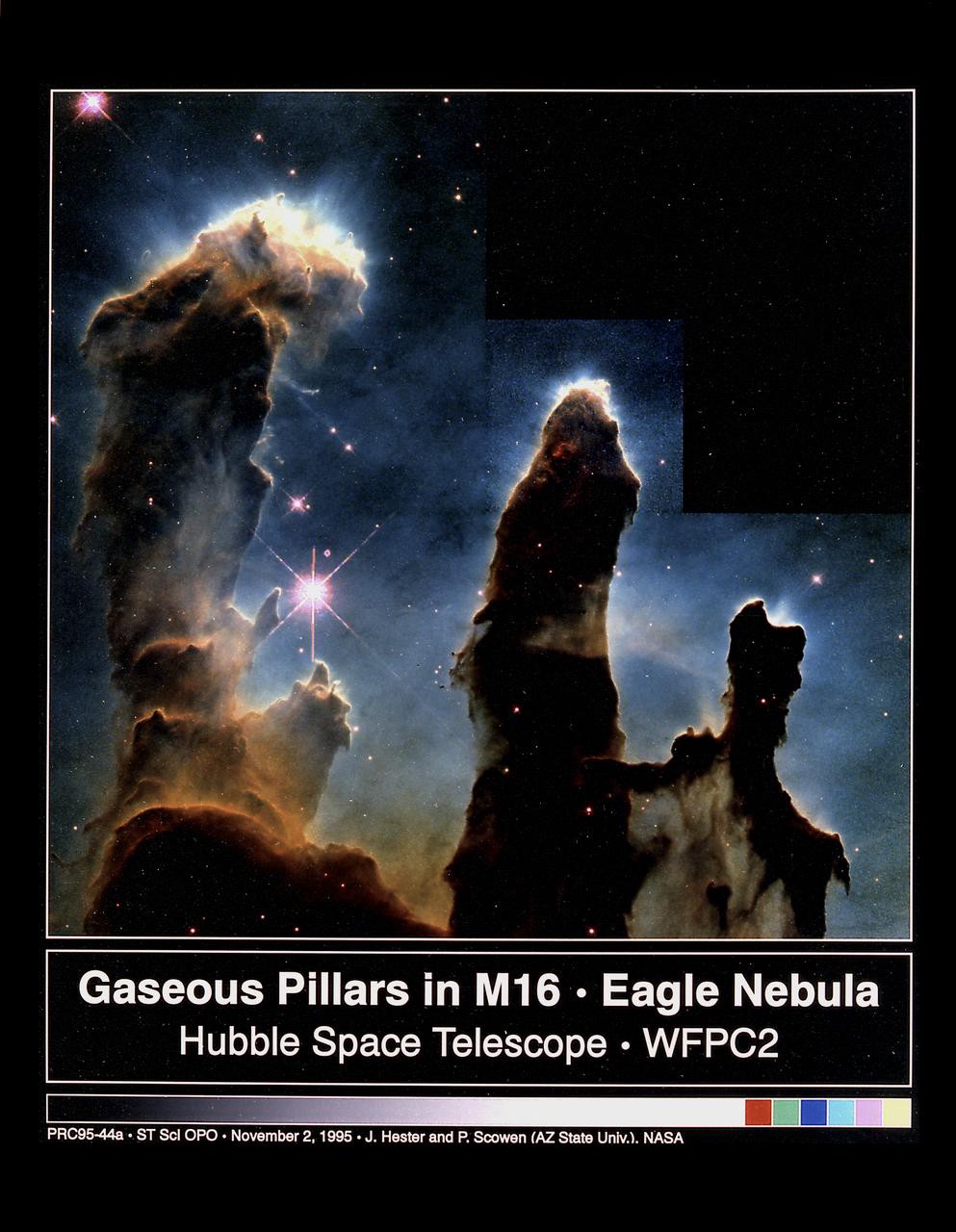 Eagle Nebula pictured using Hubble Space Telescope (Image source: NASA)
Eagle Nebula pictured using Hubble Space Telescope (Image source: NASA)
STAGE 2: A Protostar Is a Baby Star
A protostar is a very young star that is still in the process of gathering mass from its parent molecular cloud. The protostar phase is the earliest one in the process of stellar evolution. The phase begins when a molecular cloud fragment first collapses under the force of self-gravity and an opaque, pressure supported core forms inside the collapsing fragment. These fragments initially contain ~0.01 solar masses of material, but increase in mass as the surrounding material is accumulated through accretion.
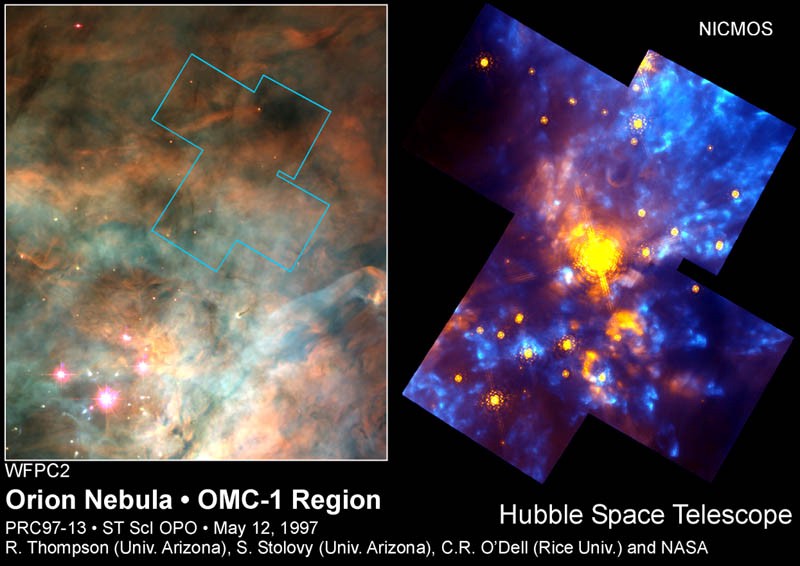 A protostar in Orion Nebula (Image source: Astronomy Notes)
A protostar in Orion Nebula (Image source: Astronomy Notes)
A protostar looks like a star, but its core is not yet hot enough for fusion to take place. The luminosity comes exclusively from the heating of the protostar as it contracts. They are usually surrounded by dust, which blocks the light that they emit, so they are difficult to observe in the visible spectrum.
The stage of stellar evolution may last for between 100,000 and 10 million years depending on the size of the star being formed. If the final result is a protostar with more than 0.08 solar masses, it will go on to begin hydrogen burning and will join the main sequence as a normal star. For protostars with masses less than this, temperatures are not enough for hydrogen burning to begin and they become ?brown dwarf stars?.
STAGE 3: The T-Tauri Phase
When the star is still in the earliest stages of formation, it doesn?t have enough temperature in its core to ignite fusion of hydrogen and helium. Instead, the star shines with just the gravitational energy of its continue collapse. Astronomers call this pre-star a T Tauri star. This early-stage lasts about 100 million years before nuclear fusion kicks in, and it becomes a true star.
In this stage, a young star begins to produce strong winds, which push away the surrounding gas and molecules. This allows the forming star to become visible for the first time. A star in its T-Tauri phase can be spotted without the help of infrared or radio waves.
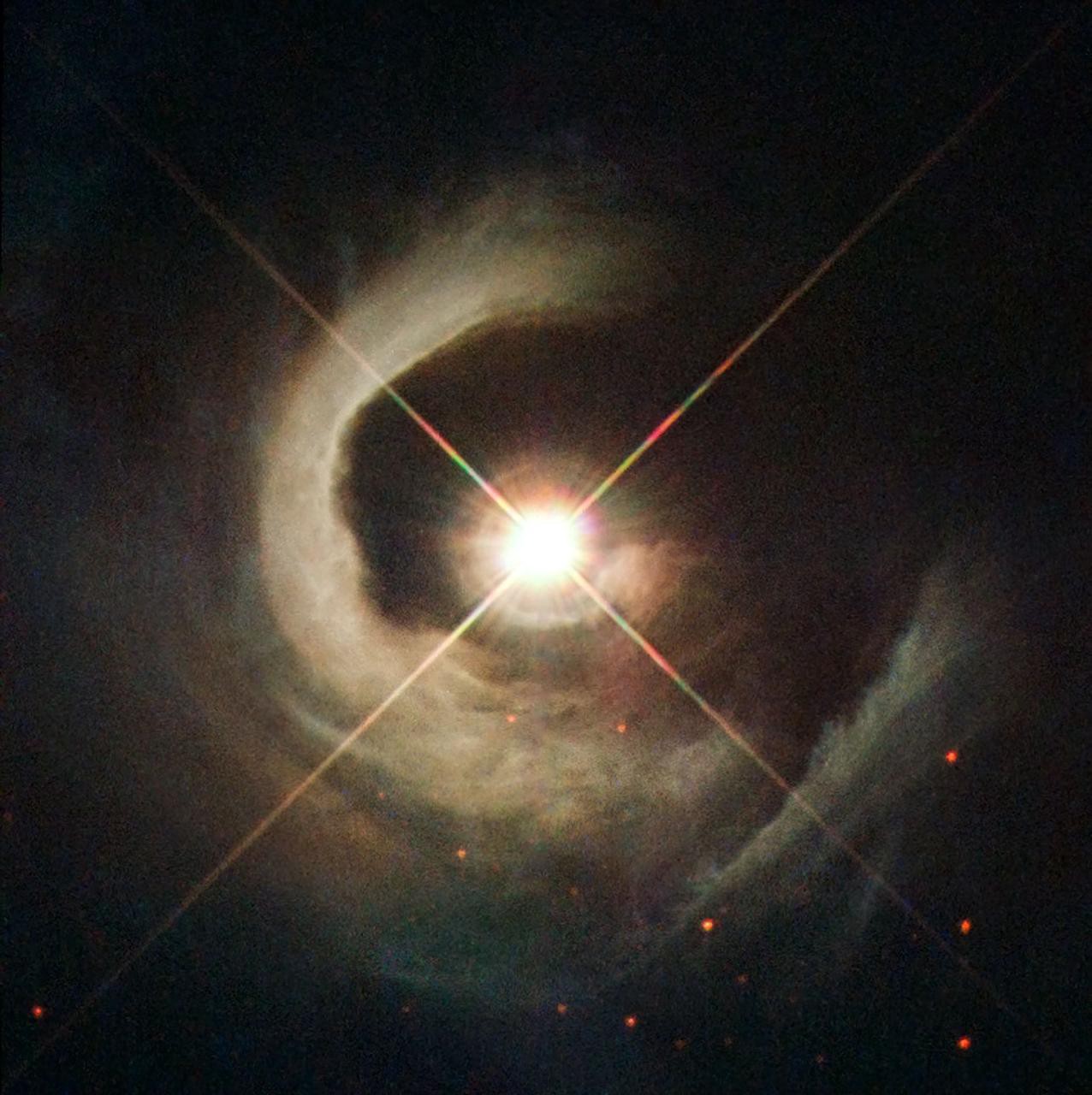 The T-Tauri phase of a star (Image source: NASA)
The T-Tauri phase of a star (Image source: NASA)
T-Tauri stars are shining violent babies.
STAGE 4: Main Sequence Stars
If the body has sufficient mass, the collapsing gas and dust burn hotter, eventually reaching temperatures enough to fuse hydrogen into helium. The star turns on and becomes a main sequence star, powered by hydrogen fusion. Fusion produces an outward pressure that balances with the inward pressure caused by gravity, stabilizing the star.
Main sequence stars fuse hydrogen atoms to form helium atoms in their cores. About 90 per cent of the stars in the universe are main sequence stars. These stars can range from about a tenth of the mass of the sun to up to 200 times as massive.
Our Sun is currently in its main sequence phase.
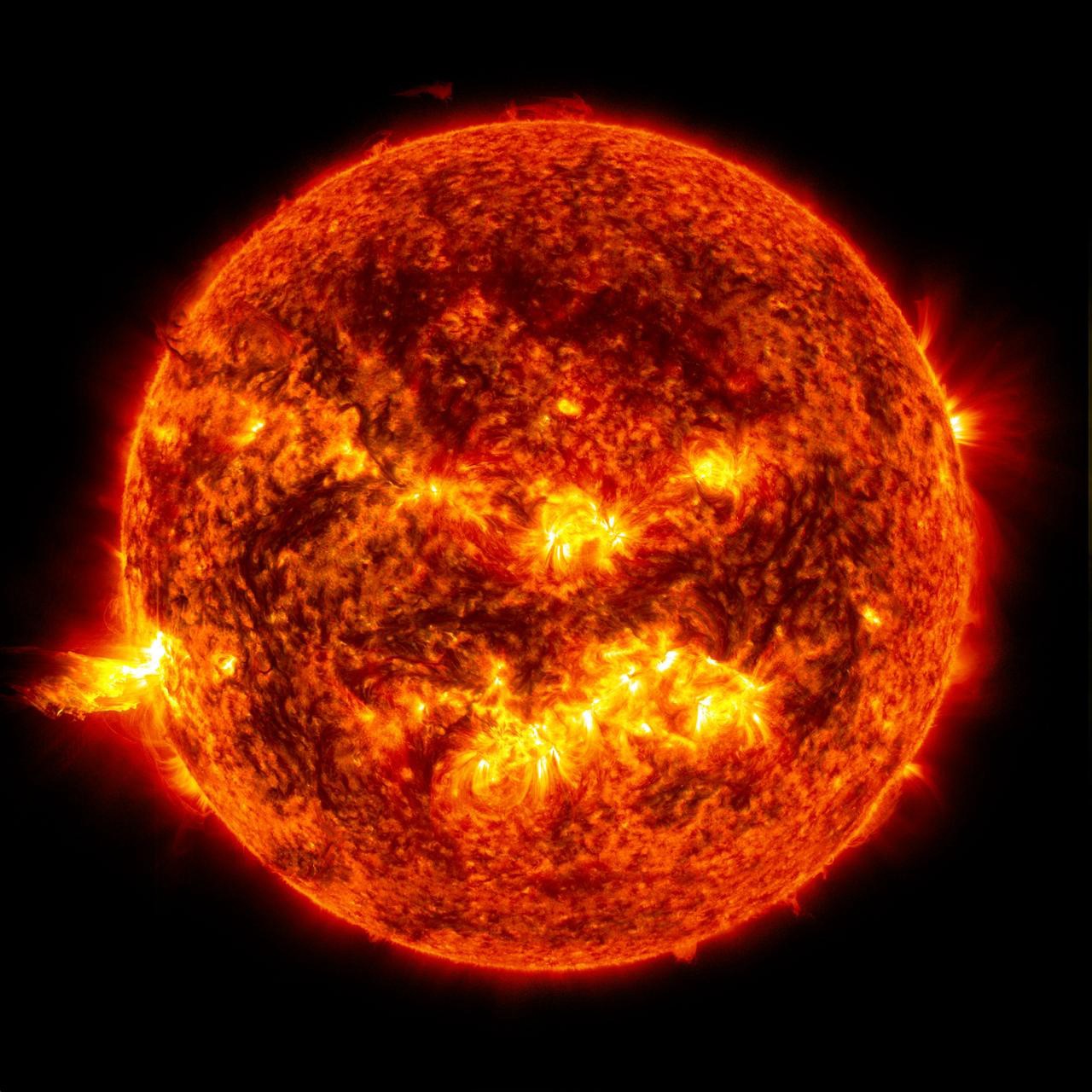 Our Sun is a main sequence star (Image source: NASA)
Our Sun is a main sequence star (Image source: NASA)
STAGE 5: Expansion Into Red Giant
When all the hydrogen in a star is fused to helium, the core contracts and its temperature increases. This increased core temperature and pressure cause helium to fuse into carbon via the triple-alpha process.
 Image source: WordPress
Image source: WordPress
This fusion releases more energy than hydrogen-helium fusion, causing an increase in radiation pressure. This increased radiation pressure pushes matter outwards, thus expanding the star. As the star expands its surface cools and becomes redder ? a red giant is formed.
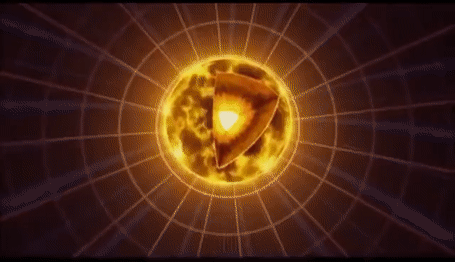 Image source: Gfycat
Image source: Gfycat
Red giants have cooler surfaces than main sequence stars. Because of this, they appear red rather than yellow.
A red giant star is a dying star in the last stages of stellar evolution. In only a few billion years, our Sun will turn into a red giant. It will expand and engulf the inner planets, possibly even Earth.
STAGE 6: Fusion Of Heavier Elements
Nuclear fusion in stars converts hydrogen into helium. In stars less massive than the Sun, this is the only reaction that takes place. In stars more massive than the Sun (but less massive than about 8 solar masses), further reactions that convert helium to carbon and oxygen take place in successive stages of stellar evolution.
Once helium fusion ends, the core shrinks, and the star begins fusing carbon. This process repeats until iron begins appearing in the core. Iron fusion absorbs energy, so the presence of iron causes the core to collapse. In the very massive stars, the reaction chain continues to produce elements like silicon upto iron.
 The fusion of heavier elements in a star (Image source: Lumen Learning)
The fusion of heavier elements in a star (Image source: Lumen Learning)
STAGE 7: Supernova And Planetary Nebula
The death of a star results in a luminous stellar explosion. A supernova explosion is one of the brightest events in the universe. Exactly how a star dies, depends in part on its mass. Our Sun, for example, doesn?t have enough mass to explode as a Supernova.
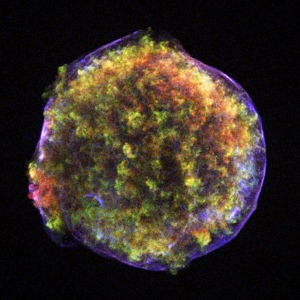 SN 1572 (Tycho?s Supernova, Tycho?s Nova), or B Cassiopeiae (B Cas), was a supernova of Type Ia in the constellation Cassiopeia, one of eight supernovae visible to the naked eye in historical records. It appeared in early November 1572 and was independently discovered by many individuals. (Image source: Wikipedia)
SN 1572 (Tycho?s Supernova, Tycho?s Nova), or B Cassiopeiae (B Cas), was a supernova of Type Ia in the constellation Cassiopeia, one of eight supernovae visible to the naked eye in historical records. It appeared in early November 1572 and was independently discovered by many individuals. (Image source: Wikipedia)
A star can go supernova in one of two ways:
Type I supernova: star accumulates matter from a nearby neighbour until a runaway nuclear reaction ignites.
Type II supernova: star runs out of nuclear fuel and collapses under its own gravity.
Low-mass stars turn into planetary nebulae towards the end of their red giant phase. At that point, the star becomes highly unstable and it starts to pulsate. The resulting stellar winds eject the outer layers. Planetary nebulae are relatively short-lived, and last just a few tens of thousands of years.
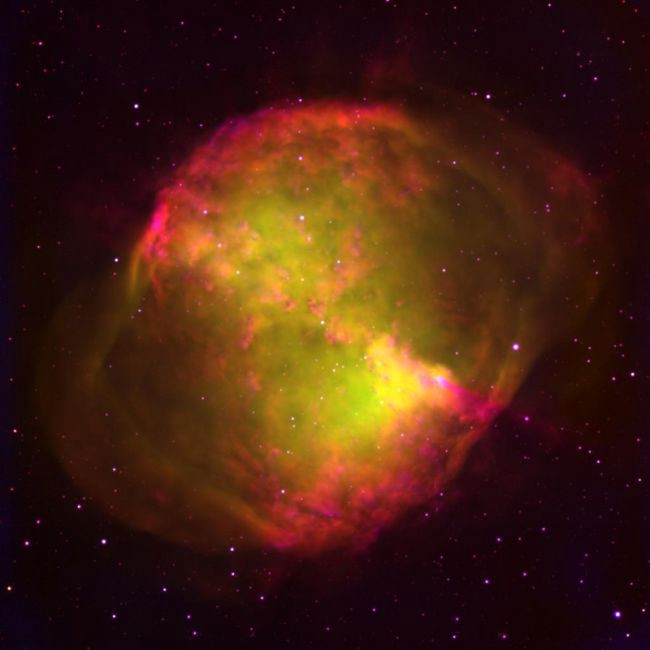 The Dumbbell Nebula (M27) was the first planetary nebula discovered, by Charles Messier in 1764. (Image source: European Southern Observatory)
The Dumbbell Nebula (M27) was the first planetary nebula discovered, by Charles Messier in 1764. (Image source: European Southern Observatory)
Wrapping It Up
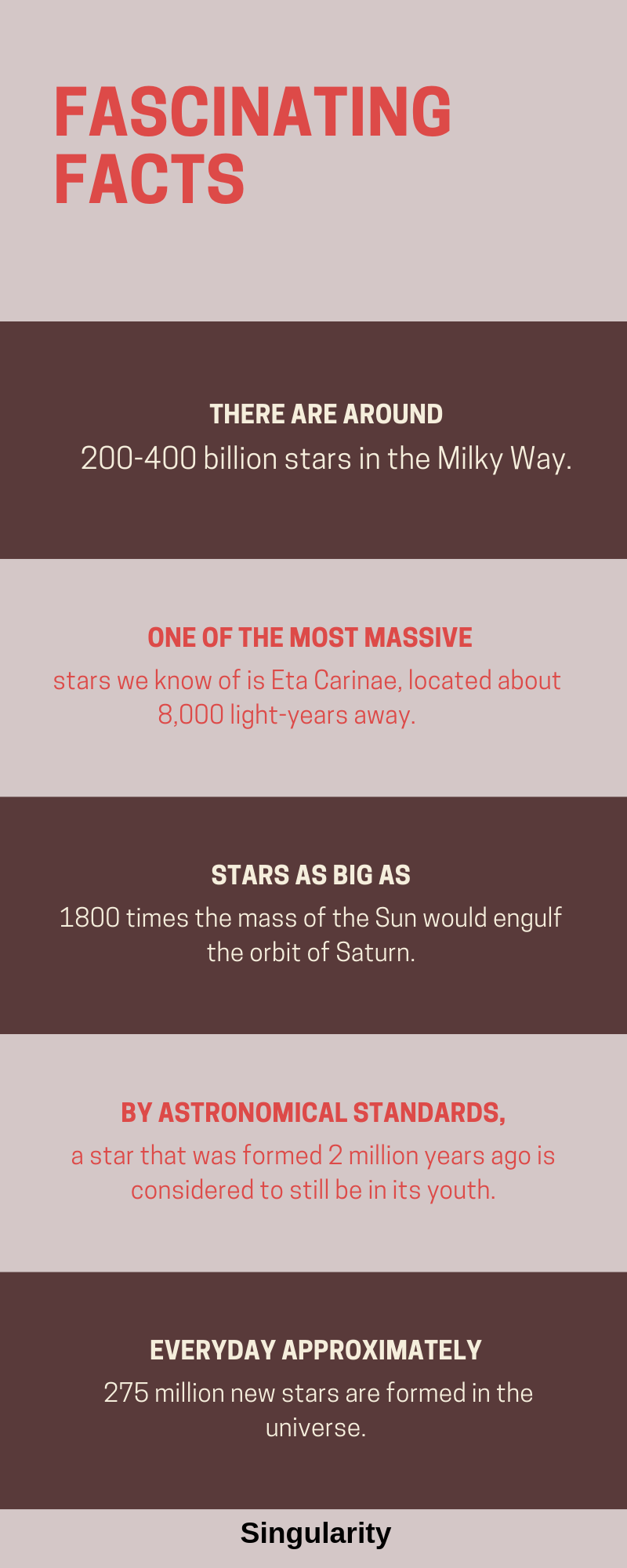
Glossary
Nuclear reaction: a nuclear reaction is semantically considered to be the process in which two nuclei, or else a nucleus of an atom and a subatomic particle from outside the atom, collide to produce one or more nuclides that are different from the nuclide that began the process.
Interstellar: occurring or situated between stars.
Stellar: relating to a star or stars.
Accretion: the coming together and cohesion of matter under the influence of gravitation to form larger bodies.
Triple-alpha process: The triple-alpha process is a set of nuclear fusion reactions by which three helium-4 nuclei are transformed into carbon.
Conclusion
I hope you got a ton of valuable information about the lifecycle of a star.
Now I?d like to hear what you have to say.
What is the most interesting point about a star that you want to know more about?
Or maybe you are already aware of all this.
Let me know in the comments section below.
![7 Stages Of Lifecycle Of A Star [With Examples]](https://911weknow.com/wp-content/uploads/2020/09/7-stages-of-lifecycle-of-a-star-with-examples-628x275.jpeg)

